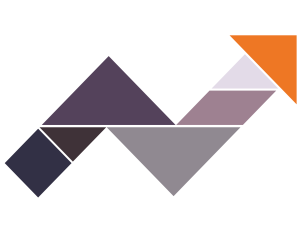Micro-Economics
- Coursera:
 Firm Level Economics: Consumer and Producer Behavior & Firm Level Economics: Markets and Allocations
Firm Level Economics: Consumer and Producer Behavior & Firm Level Economics: Markets and Allocations - Illinois Catalog BADM 528: MICROECONOMICS FOR BUSINESS
- Offered in Summer Term (May-Aug)
This course is part of the Business Tools for Successful Execution.
Course Description
The first part of this course will cover consumer and producer behavior. We will construct demand curves to capture consumer behavior and supply curves to capture producer behavior. The resulting equilibrium price “rations” the scarce commodity. Markets are frequent targets of government intervention. This intervention can be direct control of prices or it could be indirect price pressure through the imposition of taxes or subsidies.In the second part of the course we will look at markets and allocations. In this class, we will derive equilibrium outcomes across a variety of different market structures. We will begin by understanding short run equilibrium and long run equilibrium under a market structure called Perfect Competition. This particular market is a benchmark construction and we will compare the equilibrium outcomes in this market with such equilibria in other types of market configurations. Next we will consider the polar extreme of a competitive market: a monopoly market.
Instructor
University of Illinois Urbana-Champaign
Instructor’s Profile
Course Goals and Objectives
- Describe consumer behavior as captured by the demand curve.
- Describe producer behavior as captured by the supply curve.
- Explain equilibrium in a market.
- Explain the impact of taxes and price controls on market equilibrium.
- Explain elasticity of demand.
- Describe cost theory and how firms optimize given the constraints of their own costs and an exogenously given price.
- Explain how different market structures result in different allocations.
- Model the impact of external shocks to a particular market structure and demonstrate the new equilibrium price and quantity after the impact of this external shock has played out.
- Evaluate the efficiency of an equilibrium. Different market structures produce different levels of efficiency.
- Explain when and why the government might intervene with regulatory authority or antitrust litigation to lessen inefficiencies in some markets.
- Describe how information problems can cause inefficient outcomes.
- Understand externalities and consider optimal government response to these market failures.
Topics of this course
- Module 1: Scarcity, Allocation, and Markets
- Module 2: Government Intervention in markets
- Module 3: Firms, Production, and Costs
- Module 4: Firm Behavior
- Module 5: Perfect Competition
- Module 6: Monopoly Markets and Efficiency
- Module 7: Oligopoly and Game Theory
- Module 8: Market Failures
Course Materials
There is no required textbook for this course. Listed below are some suggested free online textbooks that provide additional material on the topics of this course.
- Curtis, D., & Irvine, I. (2015). Microeconomics: Markets, methods & models.
- McAfee, R., & Lewis, T. (2009). Introduction to economic analysis. Nyak, N.Y.: Flatworld Knowledge.
- OpenStax College. (2014). Principles of microeconomics. OpenStax College.
- Specific readings for each module from these texts are listed with direct links on the Readings page for each module.
Live Session Schedule (Tentative)
January 18th, 2017 – March 14th, 2017
| Saturdays | 9:00 AM – 10:30 AM, 5:00 PM – 6:30 PM US Central Time |
- Video-lessons
- Practice and graded quizzes
- Assignments
- Requirements for grading assignments
- Two online individual exams

